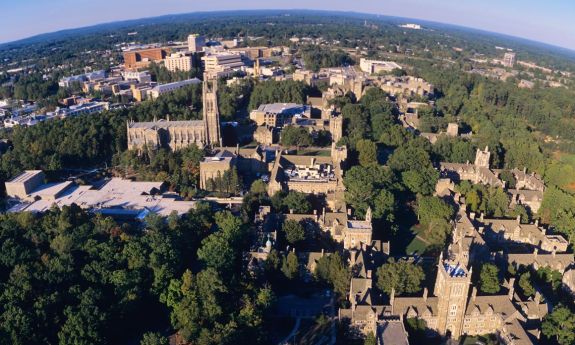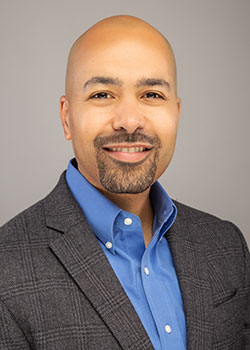Academic Council Hears Report on University Finances, Facilities


“It is a tribute to its leadership and its board that, despite DUHS facing financial stress, DUHS did not reduce its critically important support for the School of Medicine. While of course subject to regular review, the university’s current five-year financial plan is built on the assumption that funding for the school will continue at historic levels.”
DUHS’s continued mission excellence will be significantly strengthened by the integration of the Private Diagnostic Clinic, the independent organization that oversaw Duke physician clinical practices for decades. Moving these services into DUHS ensures the long-term success of the clinical enterprise and is an important investment for Duke, Ennis said.
But one issue that predated the pandemic still looms, Ennis added. While DUHS is large in relation to the university, Ennis noted that the system lacks the scale of many peer academic health systems and regional competitors. That lack of scale can translate into less favorable payor contracts and/or higher costs for health care supplies and equipment.
“Determining the right scale of Duke’s clinical enterprise lingers as an important question. DUHS’s skillful navigation of its scale challenge will assure continued clinical excellence and financial sustainability.”

Aside from DUHS, University finances are solid, bolstered by the long-term performance of the university endowment. Rachel Satterfield, vice president for finance and treasurer, noted that the endowment represents capital gifted to the university to support current and future generations of faculty and students with roughly 70% restricted in terms of its use by donor intent.
“In alignment with donor intentions, the university generated more income for its mission from the endowment over the last few years,” Satterfield said, noting that the outlay from the endowment increased from $295 million in 2022 to $434 million in 2025.
“The university’s spending rate policy is for annual distributions to be between 4 to 6% of the market value of the endowment,” she said. “Over the past three years, the actual spending rate went from 4.1% to 5% due to this growth in funding and relatively flat investment returns over that period.”
Ennis and Adem Gusa, director of planning and design, also discussed the university’s effort to prioritize renovation of research and teaching buildings such as the Wilhelmina Reuben-Cooke Building. Reuben-Cooke is one of nine buildings that Gusa said were assessed as needing comprehensive renewal.
The university’s focus on facility renewal follows a long period of extensive new construction, Gusa said. Over the past two decades, the university has added on average 340,000 gross square feet of new buildings every year. That’s roughly equivalent to adding one Levine Science Research Center every year for 20 years.

Through that period, existing research and classroom facilities received relatively less investment, Gusa added. During the pandemic, the university put the brakes on new construction and did an overall assessment of facility needs, leading to the prioritization of renovation needs in many West Campus research and teaching facilities.
Total cost to renew the identified nine buildings is roughly estimated at around $1.2 billion, with nearly half of that amount benefitting from an identified funding source, Gusa said. The university will need to identify another $550 million to $600 million in philanthropy and other sources to cover the rest.
Gusa noted that while the initial project targets nine buildings there are other research and teaching buildings that are in better shape but will need renovation work soon.
“The fundamental theme of this study is the belief in the need to reinvest in Duke’s existing campus. Renovating buildings is by far the most sustainable thing the university can do compared to new construction,” Gusa said.
Ennis said this process represents a more systematic way of assessing and budgeting for ongoing building maintenance and renovation while still planning for strategic growth.
“When we properly account for renewal costs in school budgets, there will be less money available to support growth in campus square footage. Having said this, we know that there are some areas of research and teaching where new, more sophisticated facilities will be critical to long-term mission success,” Ennis said.
“But when we do those, our goal is to be much more disciplined in considering renewal costs in the decision. We have got to build into our budgets a different level of renewal spending so we don’t fall behind and end up where we are now. I know that’s not easy for our schools to do, to set aside those funds. School budgets are stretched. What often happens is that the pressures of the moment overcome the requirements associated with longer term needs like sustaining the right level of facilities investment.”